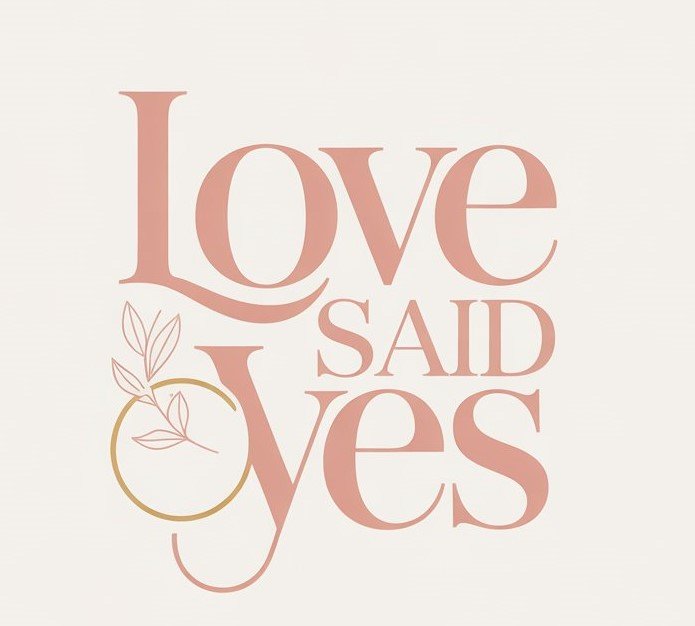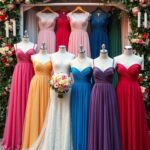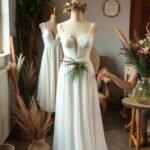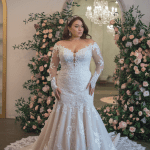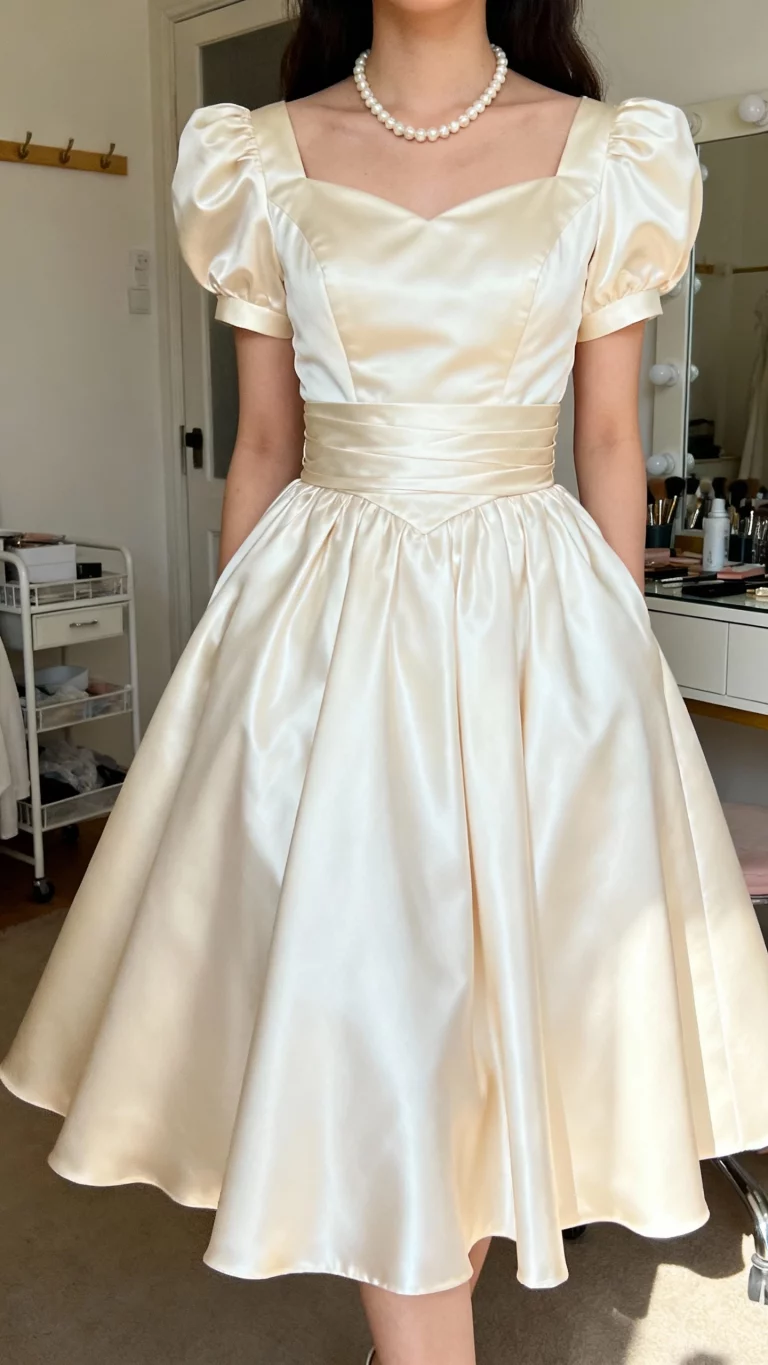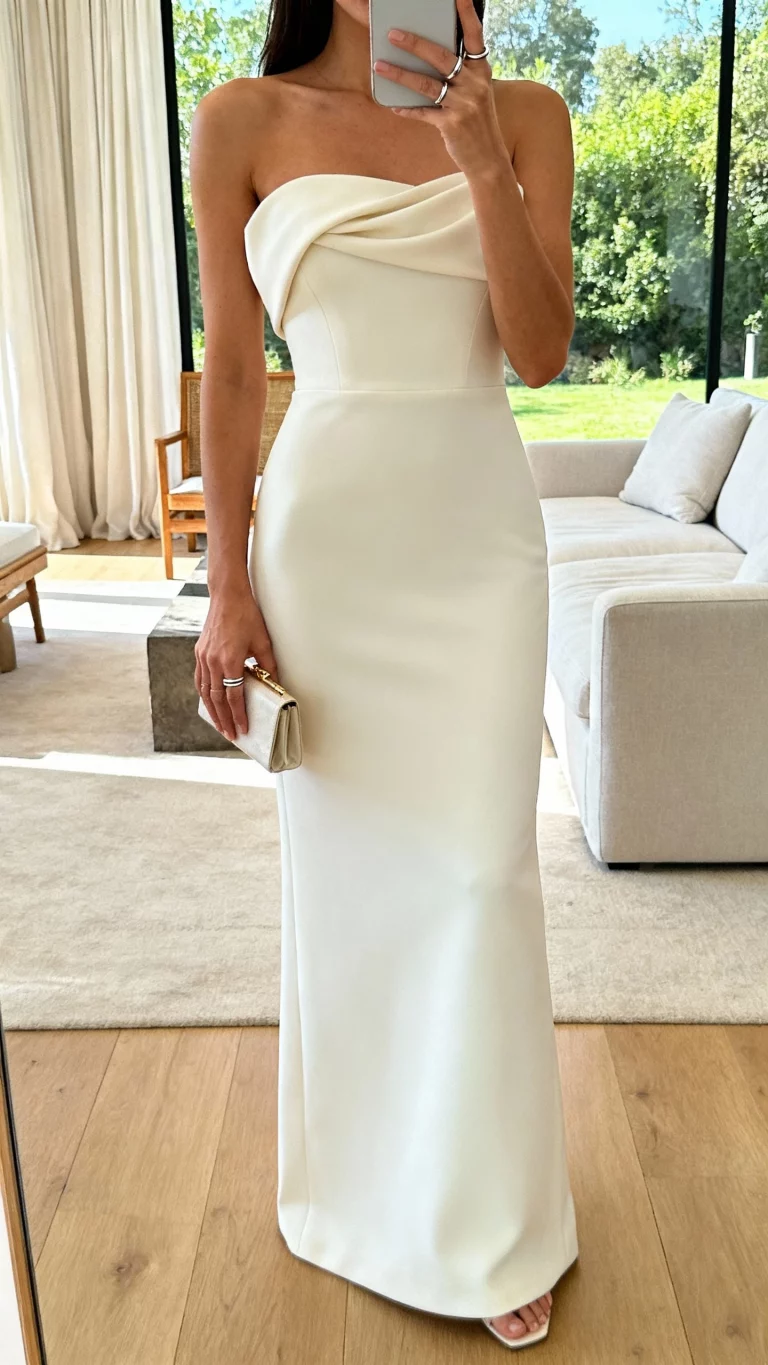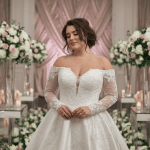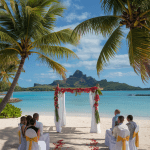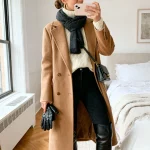When most people picture a wedding dress, they imagine a vision of white lace, flowing fabrics, and a silhouette that speaks of romance and tradition. But beneath this idealized image lies a more complex story—one that for decades excluded plus size brides from the full beauty of bridal fashion. For much of modern history, women who did not fit into sample sizes were left with limited choices, forced to adapt gowns rather than select from diverse and intentional designs.
The idea that a bride must embody a certain body type is a cultural construction rather than a timeless truth. In fact, historical records show that in many societies fuller figures were once symbols of fertility, wealth, and health. Yet with the rise of industrialization and mass-produced clothing in the 19th and 20th centuries, the fashion industry began to standardize beauty and sizing, and plus size women found themselves pushed further to the margins. Bridal fashion, perhaps more than any other category, reflected this narrow vision.
Until recently, many salons carried only a handful of sample sizes, often stopping at size 12 or 14, which excluded a large portion of real brides. Those who did not fit the sample were asked to “imagine” how the gown might look on them, or worse, were made to feel that they should change their bodies to fit the dress. This created a culture of shame around bridal shopping for plus size women, transforming what should be a joyful milestone into a stressful ordeal.
Fortunately, the narrative has begun to shift. Driven by cultural movements toward body positivity, changing consumer demand, and a new generation of designers, plus size bridal fashion has undergone a dramatic evolution. What was once an afterthought has become a thriving category of its own, with styles that embrace curves rather than conceal them. Today, brides of every size are increasingly able to see themselves reflected in magazines, on runways, and in boutiques.
This transformation has been neither quick nor easy, but its trajectory tells a hopeful story of greater inclusion, representation, and empowerment. To understand how far the industry has come, it is worth looking back at the milestones that shaped the journey.
Early Traditions and Exclusion
In the early 20th century, bridal fashion was dictated by ideals of slimness that dominated Western beauty standards. Wedding gowns were designed with hourglass or slender figures in mind, and patterns were rarely adjusted for larger bodies. Department stores and bridal boutiques typically carried only limited sizing, with most sample dresses available in a narrow range. Plus size brides often had to rely on custom seamstresses or family-made gowns, which while meaningful, reinforced the message that mainstream fashion was not for them. The exclusion was not only practical but also cultural. Magazines and advertisements from the era consistently presented thin brides as the universal ideal, leaving curvier women to feel invisible. This lack of representation shaped not just what was available but also how brides saw themselves in the context of marriage and celebration. It was not until the post-war era, when ready-to-wear clothing expanded, that the first whispers of inclusivity began to surface, though they were modest and inconsistent.
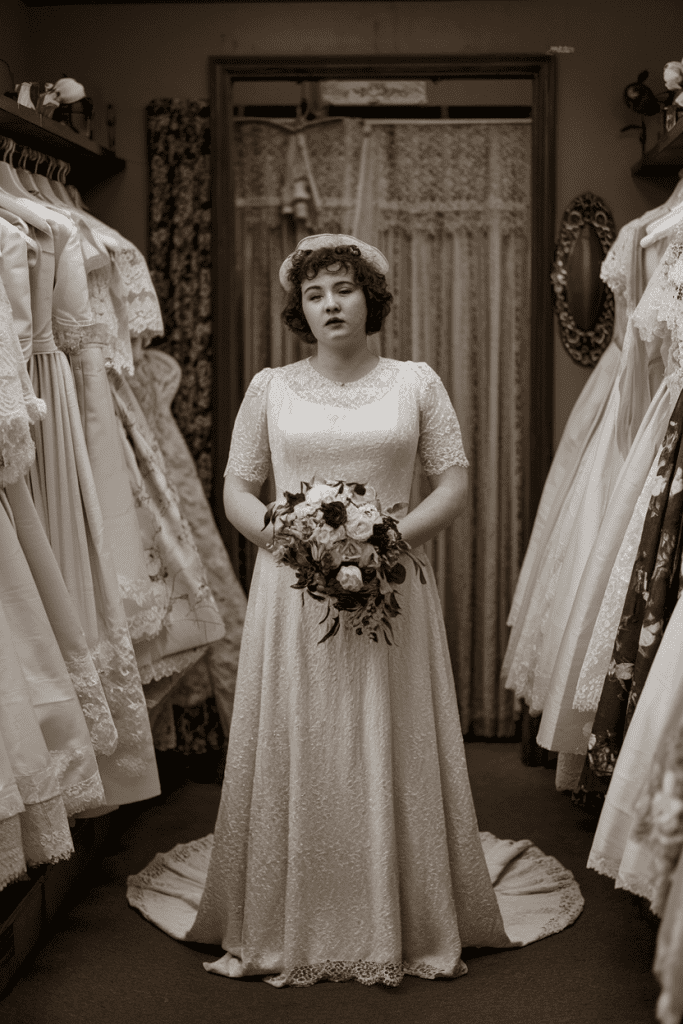
The Mid-20th Century: Hidden Options
By the 1950s and 1960s, fashion had begun to acknowledge fuller figures, though often in a limited and patronizing way. Bridal designers sometimes offered extended sizes, but they were rarely advertised or displayed. Instead, brides had to ask discreetly for “special orders,” reinforcing stigma and shame. Dresses in larger sizes were often less fashionable, made with heavier fabrics or simplified designs, under the assumption that style mattered less for bigger brides. While custom tailoring was still common, the lack of ready-to-wear choices meant that many plus size women paid significantly more for their gowns compared to their thinner counterparts. Bridal magazines occasionally included references to fuller-figured brides but typically framed them as exceptions rather than part of the mainstream. In this era, beauty ideals were so rigid that even celebrities who would now be considered mid-size were pressured to conform to narrow silhouettes. The seeds of inclusion were present but buried beneath a culture that prized uniformity and perfection.
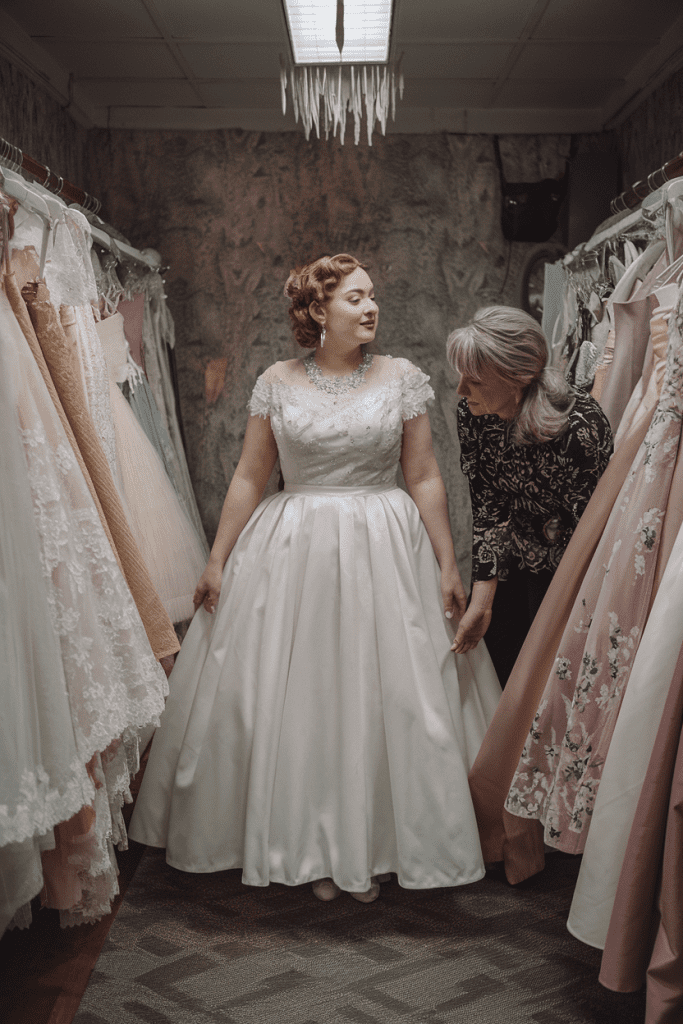
The Late 20th Century: Small Steps Forward
The 1980s and 1990s marked the beginning of a slow transformation in bridal fashion. As conversations about diversity in fashion gained momentum, some designers began extending size ranges more visibly. Still, the language used to describe these dresses often emphasized concealment rather than celebration. Gowns were marketed as “slimming” or “forgiving,” suggesting that the goal was to minimize curves rather than showcase them. Many plus size brides during this period recall being steered toward A-line silhouettes or empire waists, with consultants discouraging them from trying trendier or more form-fitting styles. While the options remained limited, the emergence of specialty bridal lines catering to fuller figures hinted at a growing awareness. Retailers also began to acknowledge the buying power of plus size brides, though inclusivity was often driven by profit rather than genuine representation. By the late 1990s, television shows and pop culture began to spotlight diverse bodies more openly, laying the groundwork for the body-positive era that would follow.
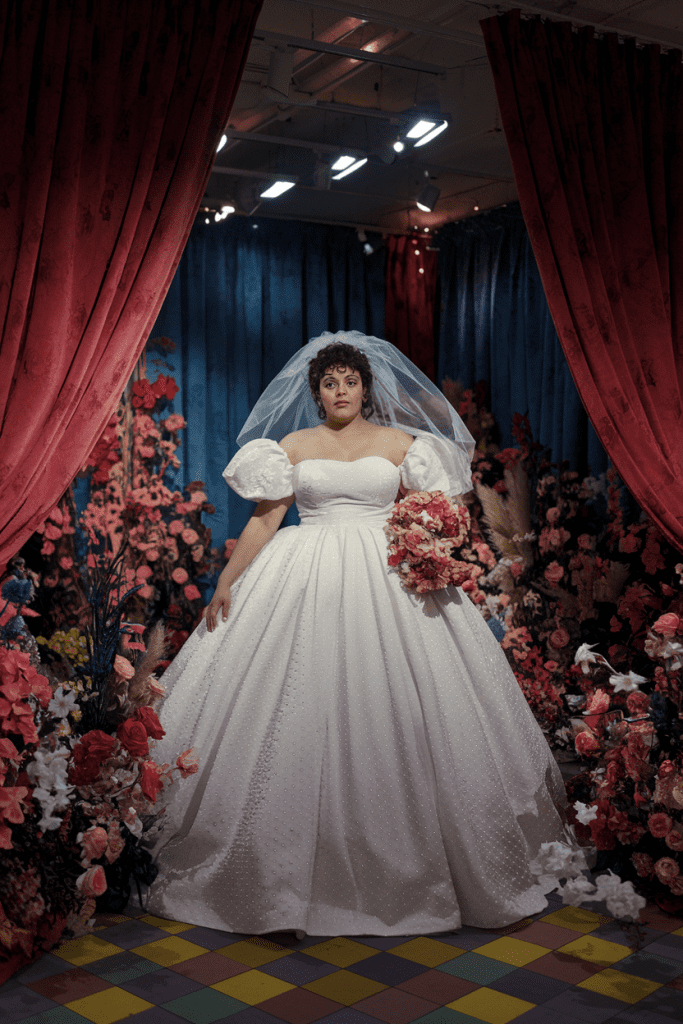
The 21st Century: The Rise of Representation
The new millennium brought a cultural shift that extended into bridal fashion. With the rise of social media, plus size brides began sharing their own experiences and demanding greater inclusivity. Designers responded by not only expanding size ranges but also offering the same fashionable designs in all sizes, rather than relegating plus size brides to a separate category. Bridal magazines slowly began to feature diverse bodies, though progress was uneven. Television shows like “Say Yes to the Dress” highlighted plus size brides in emotional and empowering storylines, giving visibility to women who had long been excluded. Influencers and activists in the body positivity movement further challenged stereotypes, proving that beauty and style are not limited by size. Today, many leading designers showcase plus size models on runways, and boutiques increasingly stock samples in a range of sizes so that brides can actually try on the gowns they want. The conversation has shifted from minimizing curves to celebrating them, marking a profound evolution in both fashion and culture.
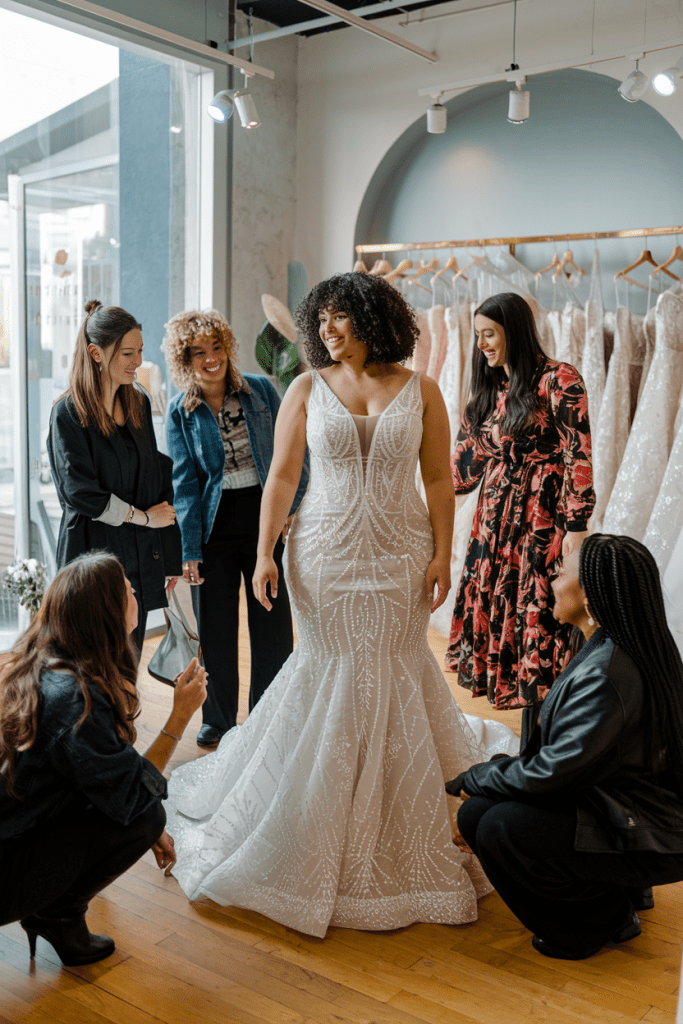
The Present and Future of Plus Size Bridal Fashion
Today, the plus size bridal market is stronger than ever. Brides have access to an unprecedented variety of silhouettes, from sleek sheath gowns to dramatic ball gowns and curve-hugging mermaids. Designers now recognize that inclusivity is not only ethical but also smart business, as the majority of women in many markets wear sizes above what was once considered standard. While challenges remain—some boutiques still carry limited samples, and upcharges for larger sizes persist—the overall trajectory is positive. Brides can now browse social media and see real women of all sizes glowing in their gowns, which has a powerful impact on self-image. The future promises even more diversity, as younger generations of designers and consumers embrace body inclusivity as a non-negotiable standard. Plus size bridal fashion is no longer about compromise. It is about empowerment, visibility, and joy.
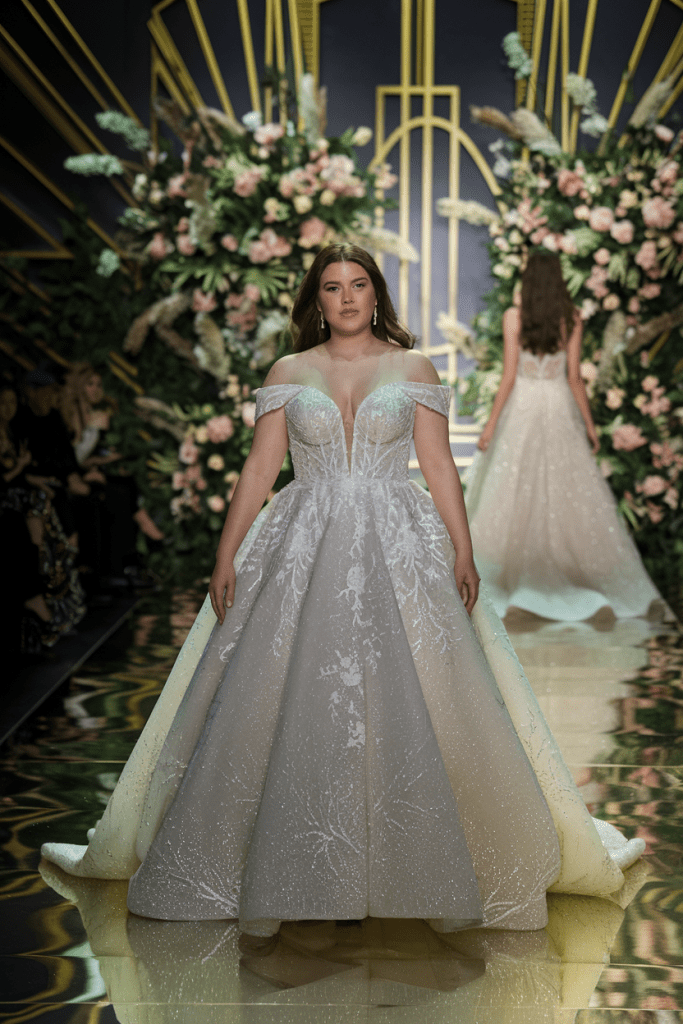
Final Thoughts
The history of plus size bridal fashion is a story of struggle, resilience, and triumph. From decades of exclusion to the current era of representation, the journey reflects broader cultural shifts around beauty, identity, and inclusion. While the industry still has room to grow, the progress is undeniable. Today, plus size brides can enter boutiques with greater confidence, knowing that their bodies are not obstacles but inspirations for designs that celebrate them fully. The evolution of bridal fashion is a reminder that love and beauty come in every size, and the wedding gown should reflect nothing less.
